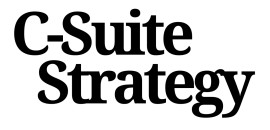
The Role of Board Meetings in Strategic Decision-Making
Strategic Influence of Board Meetings
In the realm of high-stakes decision-making, board meetings stand as instrumental forums for robust corporate governance and strategic alignment. These gatherings aren't mere procedural necessities; they are pivotal in setting the direction for an organization's growth and success. Beyond reviewing financial reports or updates, board meetings act as a convergence point where the expertise of board directors and the vision of the executive management synthesize to shape the company's future.
Each meeting agenda is crafted with the organization's goals in mind, tailored to drive discussions toward actionable outcomes. The strategic direction shaped here ensures that the initiatives align with the broader company vision and industry trends, thus enhancing the firm's competitive edge. This is not merely about compliance, but about strategic influence that transcends routine deliberations.
Learn how an independent board of directors shapes company strategy, making the boardroom a powerful engine for strategic decisions. These gatherings are vital where board members address challenges, leverage insights, and align on the company's strategic path.
The effectiveness of these sessions heavily relies on the ability of participants to engage in meaningful dialogues. In this context, good board management processes and tools, such as well-designed portal software, can enhance access to crucial documents, and ensure the seamless flow of meeting minutes and actions. Such tools not only streamline operations but also support the executive director and board chair in refining the tactical execution of strategies.
Preparing for Success: Pre-Meeting Strategies
Pre-Meeting Preparations to Drive Efficiency and Engagement
Preparing for a board meeting is crucial to ensuring its success. The first step is setting a comprehensive meeting agenda that aligns with the company’s strategic goals. This will enable both board directors and executives to focus their efforts on topics that matter. Additionally, utilizing software board solutions can streamline the process of preparing meeting minutes and other vital documents. Effective pre-meeting preparation involves the following steps:- Develop a Detailed Agenda: A well-structured meeting agenda is paramount. It should include time allocations for each topic, prioritizing issues that require critical thinking and decision-making from board members.
- Share Pre-Read Materials Early: Distribute important documents such as financial reports, previous meeting minutes, and strategic proposals in advance. This allows board members ample time to review and come prepared with insightful questions and feedback.
- Utilize a Board Portal: Board portal software is instrumental in organizing all materials in a central, secure location. By ensuring easy access to documents, board directors can better prepare for discussions and make informed decisions.
- Align with the Board Chair: Coordination with the board chair before meetings ensures alignment on strategic priorities. A conversation with the chair about meeting objectives can help clarify expectations and reinforce the importance of corporate governance and strategic management.
- Schedule Time for Informal Interactions: While the formal structure of a board meeting is vital, allowing time for informal interactions can foster a stronger relationship between the c-suite and the board. Learn more about cultivating this relationship.
Effective Communication: Engaging with Board Members
Enhancing Communication: Connecting Effectively with Board Members
Engagement is paramount in board meetings; the exchange of ideas should be seamless yet impactful. The board chair plays a crucial role in setting the tone and steering the conversation. Establishing clear objectives in the meeting agenda can help guide these interactions, ensuring they remain focused and productive.
When convening the board meeting, it's essential to create an environment that encourages open dialogue. Facilitate discussions by providing board members access to a comprehensive board portal where they can review documents and meeting minutes in advance. This preparation enables directors to arrive ready to engage meaningfully with the agenda items.
Furthermore, leverage technology to enhance communication. Utilizing portal software tailored for board management ensures that communication among board directors is efficient and secure. Such tools help in the seamless transition of vital information, allowing for thorough deliberation and better decision-making.
Effective communication also involves listening as much as talking. Pay close attention to the diverse insights shared by each board member, as these can often illuminate new pathways for the company. Additionally, the ability to synthesize these varied perspectives and integrate them into the larger vision of the organization is where true strategic brilliance lies.
In your role as an executive director or part of the management team, consistently reflect on feedback from directors post-meeting. Address concerns signaled by board members and refine your communication strategies accordingly. Navigating leadership transitions wisely is integral to sustaining effective communication channels within the board, ultimately enhancing corporate governance.
Leveraging Data and Insights for Informed Decisions
Harnessing Data for Strategic Clarity
In today's fast-paced business environment, leveraging data effectively is crucial for informed decision-making during board meetings. The ability to present clear, data-driven insights can significantly enhance the strategic discussions among board members and directors. This requires not just access to data, but the skill to interpret and communicate it effectively.
Integrating Data into the Meeting Agenda
To ensure that data plays a pivotal role in your board meetings, it should be seamlessly integrated into the meeting agenda. This involves identifying key metrics and trends that align with the company's strategic objectives. By doing so, board members can focus on data that directly impacts the organization's goals, facilitating more productive discussions.
Utilizing Board Portal Software
Board portal software can be an invaluable tool in managing and disseminating data efficiently. It allows for secure access to meeting minutes, financial reports, and other critical documents, ensuring that all board members are well-prepared. This technology not only saves time but also enhances the overall governance process by providing a centralized platform for information sharing.
Engaging Board Members with Data Insights
Effective communication of data insights is essential for engaging board members. This involves presenting data in a clear, concise manner, often through visual aids such as charts and graphs. By doing so, board directors can quickly grasp complex information, enabling them to make informed decisions that drive the company forward.
Ensuring Data-Driven Accountability
Post-meeting follow-up is crucial to ensure accountability and progress. By documenting decisions and action items in the meeting minutes, and regularly reviewing these in subsequent meetings, the board can track the implementation of data-driven strategies. This continuous loop of feedback and adjustment helps maintain focus on strategic objectives and enhances corporate governance.
Navigating Challenges and Conflicts
Tackling Roadblocks to Maintain Momentum
Even with the best-laid plans, challenges and conflicts are inevitable in board meetings. Handling these issues effectively is crucial for maintaining the momentum of strategic decision-making. Here, the role of the board chair is paramount in steering discussions and resolving disputes efficiently.
Facilitating Open Dialogue
Encouraging a culture of open dialogue can help preempt conflicts. Board members should feel comfortable voicing differing opinions, and all contributions should be considered valuable. This inclusive environment can alleviate tensions and lead to more effective board management.
Leverage Diverse Perspectives
Conflicts often arise due to differing perspectives. It’s crucial to turn these diverse viewpoints into a strength rather than a divisive factor. The board of directors should be trained to see these differences as opportunities for innovation and improved corporate governance.
Utilize Board Portal Software for Efficiency
Technology can be a powerful ally in managing board meetings efficiently. Leveraging board portal software allows members to access the meeting agenda, review minutes, and stay updated on any changes before the bod meeting. This preparedness helps mitigate misunderstandings and smoothens the flow of discussions.
Resolving Conflicts with Diplomacy
When conflicts do arise, they should be approached diplomatically. The executive director or board chair can serve as mediators to facilitate resolution. Creating a framework for conflict resolution can ensure that disputes don’t derail the strategic objectives of the company.
Focus on Long-Term Success
The overarching goal is to keep the focus on long-term success rather than getting sidetracked by temporary disruptions. Ensuring alignment with the company’s mission and vision, and reiterating these priorities at each directors meeting can help maintain this focus.
Post-Meeting Follow-Up: Ensuring Accountability and Progress
Ensuring Accountability and Progress Through Post-Meeting Initiatives
Following a successful board meeting, ensuring accountability and monitoring progress become paramount in driving the company's strategic goals. By effectively managing post-meeting actions, the C-suite can solidify decisions and keep the momentum moving forward.
One crucial step is to circulate the meeting minutes promptly. This documentation serves as the official record of what transpired during the board meeting and acts as a reference for all involved parties. It is vital that the minutes are comprehensive, capturing not only the decisions made but also the discussions surrounding critical business issues.
- Assign Responsibilities: Clearly designate tasks and responsibilities to specific board members or teams. This can be achieved by linking each action item in the meeting minutes with an accountable executive, ensuring clarity and ownership.
- Set Clear Deadlines: Establish realistic timelines for each task. This will help piece together a cohesive plan for implementing decisions and encourage timely execution, aligning with strategic management principles.
- Utilize Technology: Implement board portal software to streamline the follow-up process. Leveraging such tools can help notify directors and executives about upcoming deadlines, thereby improving board management and collaboration.
Involving the board chair and other directors in the follow-up can enhance corporate governance. Regularly scheduled updates on progress, whether through additional meetings or comprehensive reports, can further engage board members and ensure all strategic objectives are on track.
An executive director's role often involves orchestrating these post-meeting initiatives. They should communicate regularly with the board chair and relevant directors, providing updates on progress and any arising challenges.
Finally, fostering an organizational culture that prioritizes accountability will enhance the effectiveness of post-meeting efforts. Aligning these strategies with the overall goals discussed during the board meeting ensures all board members stay focused on advancing the company’s objectives.














